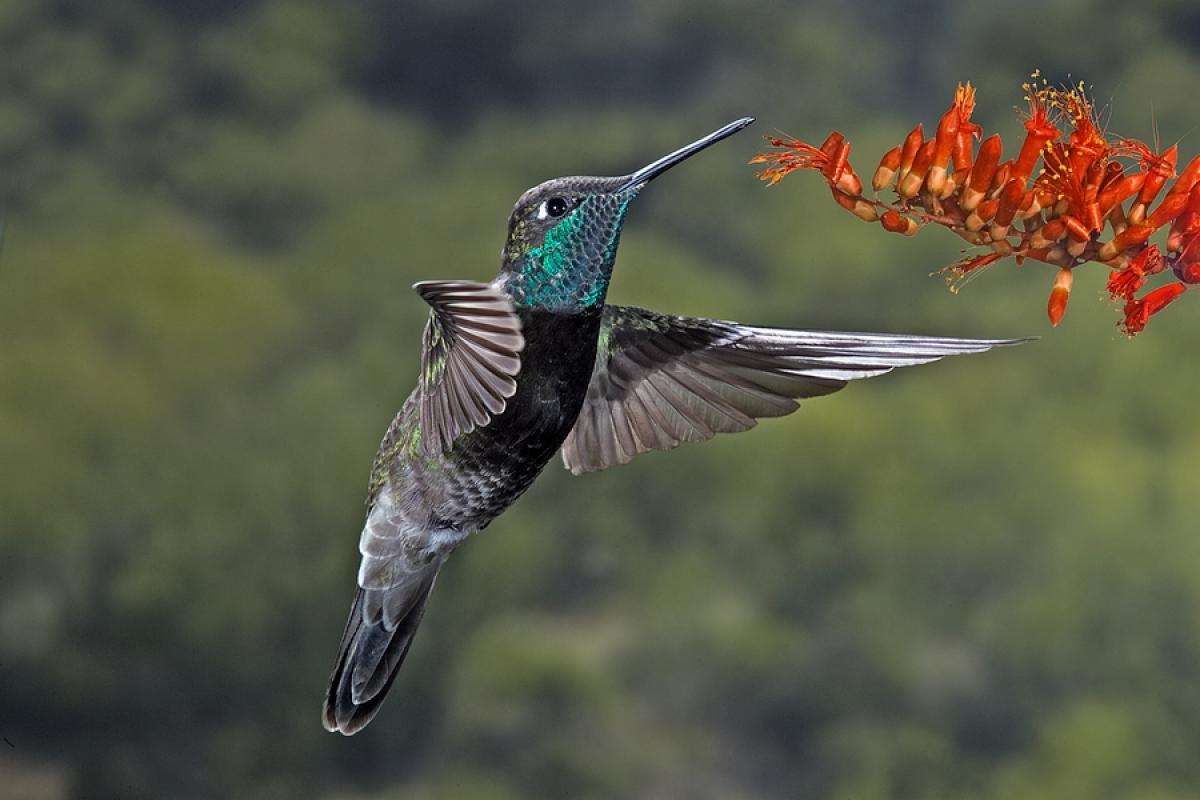A hummingbird hovers over a feeder filled with sugar water or a tubular flower brimming with nectar. Standing at a distance, we see the bill probing into a hole or a crevice. The slender bill looks harmless; it looks as if it were made to lightly delve into delicate flowers.
Though, in a flash, the hummingbird can re-purpose the tool as a weapon. This bill is for pollination and combat. Hummingbirds use their bills to knock other birds off their perches and to fence while they hover over flowers.
All hummingbird species fight in these ways, including females. But a few species have weaponized bills with hooks at the end and serrated edges, which males use to ruffle and rip at other males' feathers.
In other species, males fend off intruders in nimble jousts. Their goal is not really to eat all the time but to use the bill to make sure no other birds get to the prized flower.
For nearly two centuries, it's been thought that when hummingbirds do feed they use the help of capillary action. This allows a fluid to rise against gravity, like when you dab a rag in water, and it runs up the cloth.
The thinking was that nectar rose along the grooves of a hummingbird's tongue. But in reality, the tip of a hummingbird's tongue contorts and configures around the tip of its bill to draw nectar into its mouth.
Of course, hummingbirds with hooked or serrated bills feed in different ways than those without special features. Hummingbirds with weaponized bills, and those without, all compete in fencing matches over their preferred flowers.










